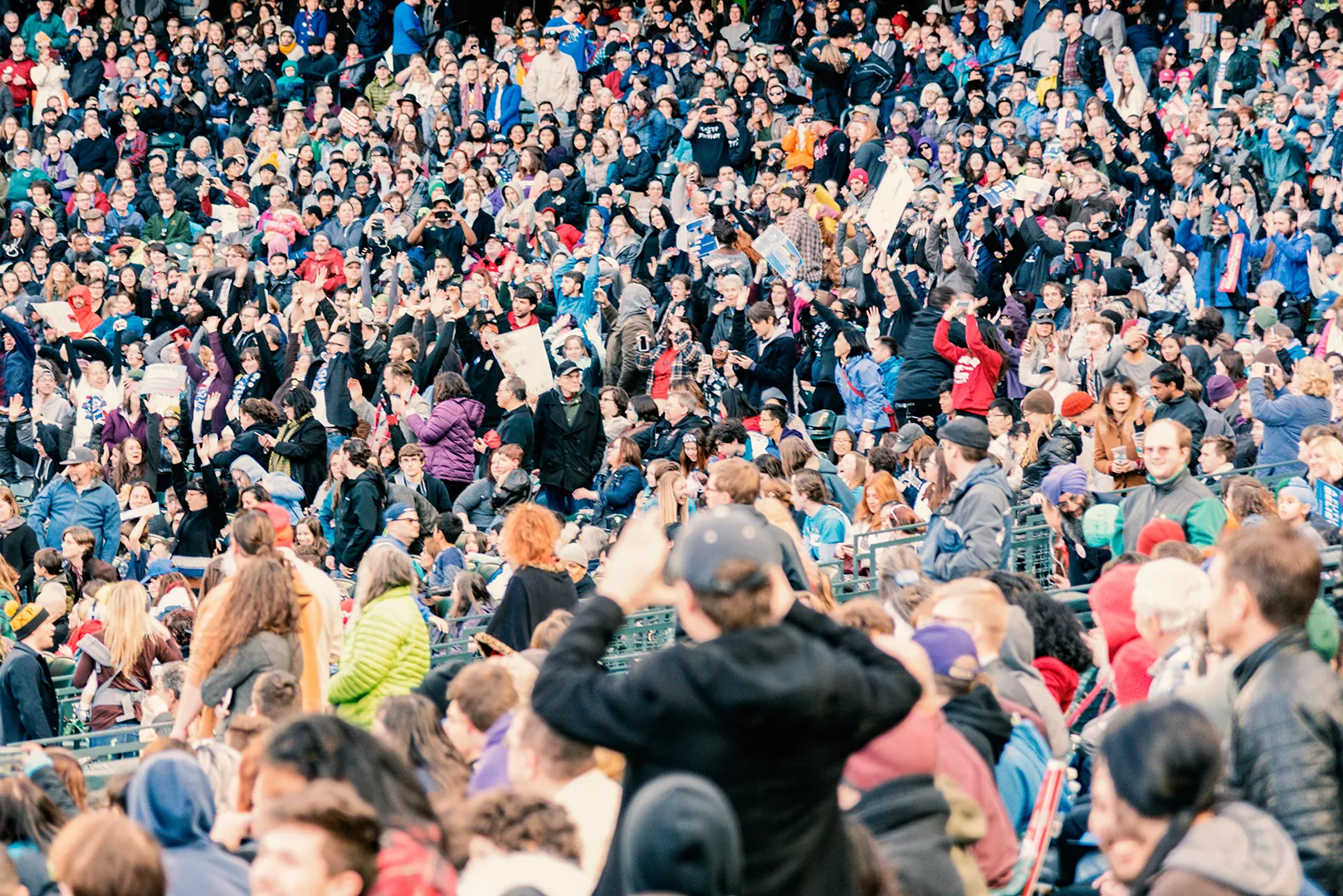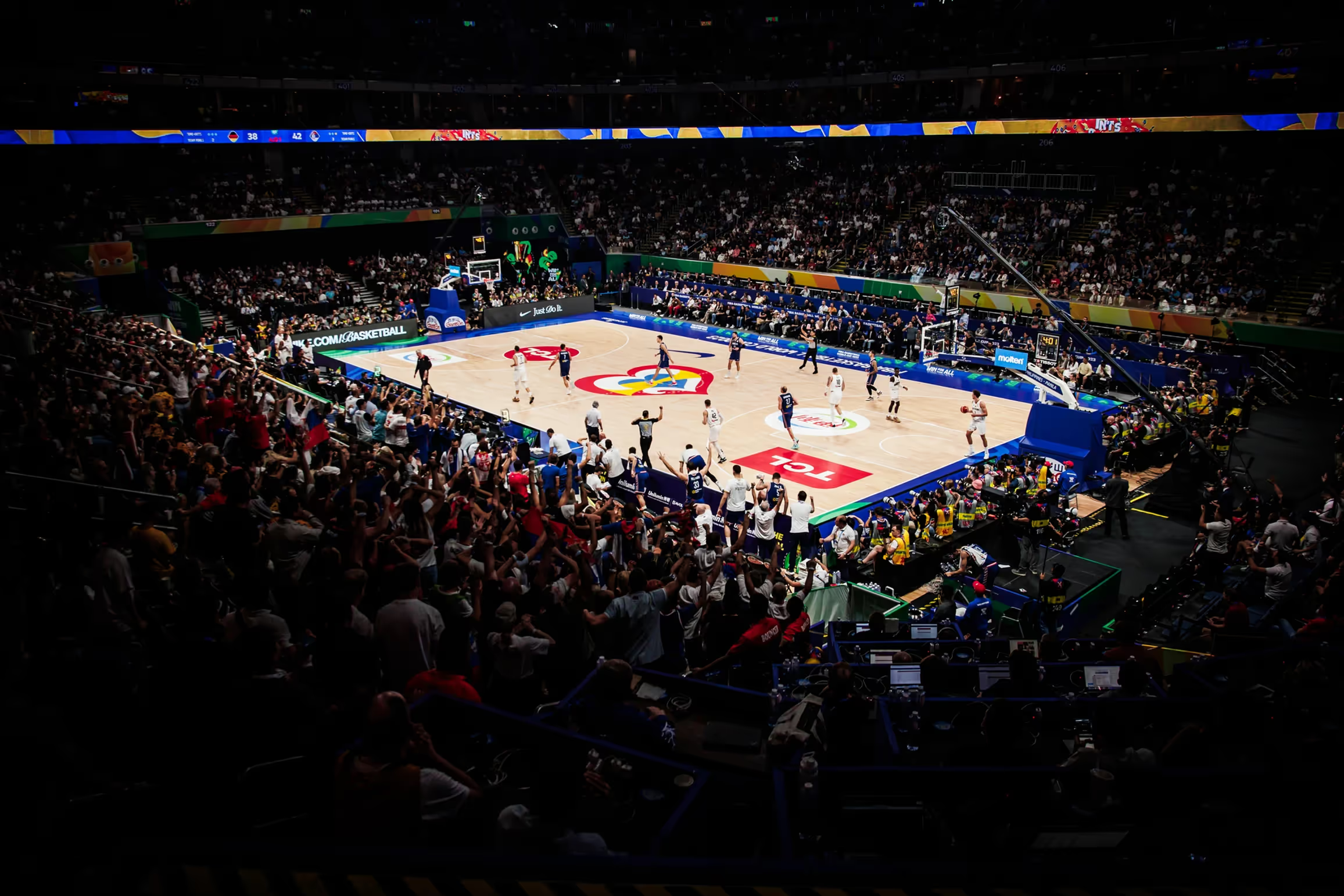Why Venue Management Systems Aren’t Enough Anymore

How Digital Twins are transforming event operations
Venue management systems used to be the backbone of stadium and arena operations. They helped teams manage bookings, calendars, contracts and day-to-day venue logistics.
However, sports event operations today are a different game. In some cases, you’re orchestrating a complex ecosystem of venues, training sites, fan zones, mobility plans, broadcasters, sponsors, and security partners, often across multiple cities and countries.
This is where digital twins come in. Instead of static maps and screens, a digital twin for stadiums and venues gives you a live, map-centric representation of your event: how spaces are being used, where flows intersect, which assets are deployed, and what needs attention before, during, and after match day.
Virtual Venue was built precisely for that shift, to go beyond traditional venue management systems and give club owners, federations, leagues, and large scale event organizers a single collaborative platform for sports event operations.

Why traditional venue management systems aren’t enough for major sports events
Most venue management systems were designed for single venues and business-as-usual operations, focusing mainly on booking calendars and room reservations, managing contracts and billing workflows, and offering basic event planning software tailored to smaller, less complex events.
That’s valuable, but when you move into major competitions such as a FIFA World Cup, UEFA Champions League, NBA Cup or PGA Tour, these tools hit their limits.
1. Fragmented data across tools and teams
- Venue management systems, spreadsheets, CAD files, PDFs, WhatsApp groups, email threads, all running in parallel.
- Each functional area (broadcast, security, hospitality, ticketing, mobility) maintaining its own plans.
- There’s no shared “map of truth” for how the venue and surrounding areas will actually be used during the event.
2. 2D plans for 3D problems
Static 2D venue layouts and PDFs don’t capture the complexity of:
- Multi-level stadium planning (public walkways, seating areas. staff-only spaces, media zones).
- Flows of people, vehicles, and broadcast crews.
- Overlays that change from one event to the next.
Traditional stadium planning software often relies on specialist CAD/GIS teams, which creates bottlenecks and slows down iterations.

3. Limited collaboration at scale
- Most venue management systems are built for small, local teams.
- Major sports events involve dozens of organizations: federations, LOCs, clubs, stadium owners, municipalities, emergency services, transport authorities, rights holders, and other suppliers.
- Without real-time collaboration over a shared plan, misalignment becomes the norm.
4. No full lifecycle view
Sports event operations don’t start on match day. They cover everything from:
- Bid phase and host selection.
- Site inspections and venue readiness.
- Venue overlay and design.
- Test events and rehearsals.
- Match day operations.
- Handover / handback.
Venue management systems are usually focused on the event day or day-to-day venue operations, not on the complete lifecycle.
5. Sustainability and cost blind spots
- Every site visit is time, travel budget, and carbon.
- Paper-based checklists, printed maps, and repeated inspections are still the norm.
Most venue operations software were not designed with remote, map-centric collaboration or sustainability impact in mind.
How Virtual Venue connects planning, operations, and sustainability in one digital twin
Virtual Venue is a map-centric digital twin that brings all venues, teams and plans into one place. Instead of juggling separate tools, it becomes the “source of truth” for your competition.
You can model stadiums, training sites, hotels, and fan zones, draw keys, zones, and flows directly on the map, and attach documents, photos, and 360º panoramas so teams can understand each location without flying there.
On top of this, Virtual Venue adds further event planning and operations solutions such as Event Reporting, Incident Management, Asset Management, so inspections, issues, logistics, and match-day timelines are all linked to exact locations instead of living in disconnected files.
Because everything is location-aware and shared in real time, Virtual Venue helps cut site visits, reduce paper processes, and standardise workflows across venues, supporting both operational efficiency and sustainability goals.

From venue layouts to real-time collaboration
A digital twin is only useful if it changes how people work day to day. Here’s how Virtual Venue turns layouts into live collaboration.
1. Design once, reuse often
With Virtual Venue, your teams can:
- Import base maps, blueprints, or CAD exports.
- Draw and edit keys, flows, zones, and assets using a simple, browser-based interface.
- Create multiple overlays for different phases (for example: setup, match day, de-rig).
- Reuse previous event plans for the same stadium or city, instead of starting from scratch every time.
This makes Virtual Venue not just stadium planning software, but a long-term knowledge base for your events.
2. Real-time collaboration across functions
Unlike most venue management systems, Virtual Venue is built for multi-team, multi-venue collaboration:
- Multiple users work on the same map plans simultaneously.
- Functional areas (security, broadcast, hospitality, media, transport, etc.) manage their layers and allocations under a single shared reference.
- Permissions can be defined by role, event, so each stakeholder sees exactly what they need.
Everyone talks about “breaking silos”. This is what it looks like in practice for sports event operations.
3. From planning to live operations
Because Virtual Venue is more than static mapping, it becomes a live command layer for your event:
- Dashboards show key KPIs for readiness, incidents, and asset requests.
- Incident Management connects issues to exact locations and responsible teams.
- Activity Plans combine time and place, so you can see what’s happening where and when across your venues.
The result: venue operations software that’s ready for real-time decision-making, not just documentation.
4. Integration with your wider ecosystem
Virtual Venue is built on an API-first architecture with REST APIs and an SDK.
That means you can:
- Feed venue and event data into existing BI tools or control rooms.
- Connect to ticketing, access control, CCTV, or crowd management systems.
- Embed maps and digital twins into other internal tools.
Instead of yet another siloed event planning software, Virtual Venue becomes part of your core digital infrastructure.

Case Study: How FIBA uses Virtual Venue for multi-venue operations
Virtual Venue first supported FIBA during the FIBA Basketball World Cup 2023 in the Philippines, Japan, and Indonesia, where they needed more than traditional venue management systems to coordinate plans across multiple countries, venues, and organizing structures. Since then, FIBA has adopted Virtual Venue as its venue operations software for major competitions, including the FIBA Women’s Basketball World Cup 2026 in Germany and the FIBA Basketball World Cup 2027 in Qatar, as well as other tournaments that run throughout the year.
For a global federation with many competitions and venues, the priority is to have one consistent way of working: a digital twin for stadiums and arenas that doubles as event planning software for different stakeholders. Virtual Venue gives FIBA a single environment for sports event operations, where venue overlays, responsibilities, and timelines are standardised, easy to reuse, and accessible to everyone who needs them, wherever they are based.
"We’re excited to embark on this project after our successful cooperation around the last World Cup. We’re looking forward to exploiting the full potential of this powerful online venue planning solution, ensuring we have one source of truth and a standardised planning approach for all stakeholders across the event organization, while leveraging the many functionalities and possibilities the platform provides." Ashley Green, FIBA Head of Events
By managing this in a digital twin environment rather than in isolated stadium planning software or local tools, FIBA can reduce repeated site visits, support its sustainability goals, and build a long-term operational knowledge base that carries lessons learned from one competition to the next.
If you’re a federation, league, or major event organiser, Virtual Venue helps you bring planning, operations, and sustainability together in a single digital twin. It works as venue operations software that standardises workflows across venues and countries, while still being simple enough for non-expert users to work from one shared source of truth.
If you’re comparing venue management systems or stadium planning software, Virtual Venue is one to look at.






.svg)
.svg)
